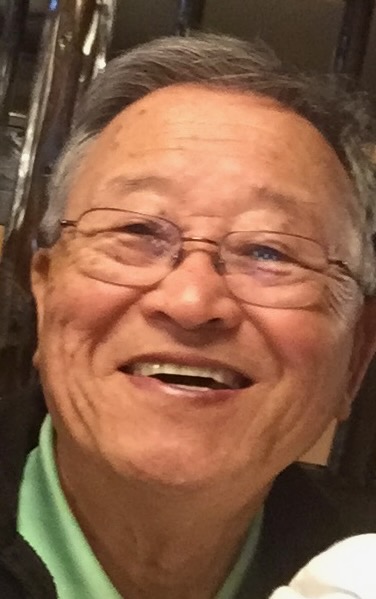
By Rev. Patti Nakai
(ed. note: After retiring as a civil engineer, Rev. Paul Imahara committed himself to studying Jodo Shinshu and following the Nenbutsu path. He eventually became ordained as a Higashi Honganji minister and helped at various temples in the North America District, especially Newport Beach. He also held services and study sessions for seniors, and after moving to Las Vegas, Nevada, he continued helping others follow the dharma. Even as his health declined, he remained active. Rev. Imahara passed away last Sunday.)
For most of us, death is in the hypothetical future. “Whether it be today, whether it be tomorrow; whether I go before others or others go before me,” as we recite from Rennyo’s “Letter on the White Ashes” (hakkotsu no ofumi). I wanted to visit Rev. Paul Imahara in Las Vegas to hear from someone for whom death is in the very near future.
When I turned 70, it dawned on me that now my life expectancy is more likely in the single, not double digits. There’s a lot I shouldn’t have to put up with anymore (so relieved I retired from the temple October 1st) and there’s things I shouldn’t put off while I still have mobility and a relatively clear head. In that latter category, I was eager to hear what Rev. Paul is doing.
Since I was going to Berkeley to attend the Ho-on-ko service, my husband suggested I stop in Las Vegas on the way and visit Rev. Paul. I checked into an airport hotel and took a taxi to his residence in a senior community. His daughter and her husband arranged for us to have dinner at a nearby Japanese restaurant.
The conversation during dinner was mostly small talk to catch up with each other. I asked Rev. Paul if he had to be careful of what he ate and drank and he said his doctor told him to eat and drink whatever he wanted. During and after dinner Rev. Paul kept remarking the sake was exceptionally delicious and I was glad he could enjoy the taste and I could share in that enjoyment.
His daughter and her husband said they’d drive me back to my hotel (30 minutes trip) and gave Rev. Paul the option to go home instead of riding along. He said, “Patti came all this way because she wanted to talk to me, so let us talk.”
During that ride we had our serious talk. He said he didn’t want to be critical but mentioned one young minister who gave nice lectures explaining Jodo Shinshu history but it was as if he didn’t learn much about the actual teachings during his training. Rev. Paul and I agreed that seemed true for a lot of ministers. They talk of Buddhist philosophy but don’t get into what Shinran taught, which is the nembutsu. In the weekly Dharma discussions on Zoom that Rev. Paul attends, he said the one Japanese minister (the other participants are lay people) confessed that he often gives Dharma talks putting nembutsu off away to the side (ano hen).
Although Shinran said the nembutsu is beyond our comprehension and our attempts to pin it down into a pat explanation, Shinran felt it was important to keep talking about it to people as evidenced in Tannisho and his written works. I said to Rev. Paul that even though nembutsu is beyond our rational thinking, we experience it. Rev. Paul responded with, “We receive it.”
That awareness of receiving is so key to Shinran’s teachings but so hard to convey in English to our Western-educated minds (focused on getting things). English as a language just doesn’t offer such verb conjugations as in Tannisho’s first chapter: tasukerare–mairasete and azukeshime–tamaunari.
In Rev. Paul’s case, he doesn’t have to be standing on a mountain top, shouting to the multitudes about the nembutsu. He participates in some interactive Zoom study groups with fellow travelers (ondobo) from Japan, the US and Europe. To be in touch with a few people who are involved in their own social circles is adequate enough compared with those who may have a large in-person and online audience, with print and video sermons accessible to anyone. It is enough for him to be the attestation (shō) to me of how the Great Life (Amida) flows and provides support in the nembutsu, even as death approaches.
We didn’t have to put our palms together and recite “Namu Amida Butsu.” In so many small gestures and expressions, Rev. Paul is conveying the nembutsu he is receiving in wave after wave.
At this time many people are suffering and we can only do limited things which may (or may not) help them. But in the nembutsu we hear the voice that calls us to an awareness that transcends our suffering and its causes. It is not supernatural like some selfish wish-fulfilling magic, but the voice calls from the Greater Life (Amida) that is not confined by our egocentric concepts. To receive this awareness of all lives being embraced is to shift our focus from the dwindling lifespan we cling to and to open our hearts to the many lives around, before and after us.
-Rev. Nakai recently retired as resident minister of Buddhist Temple of Chicago

